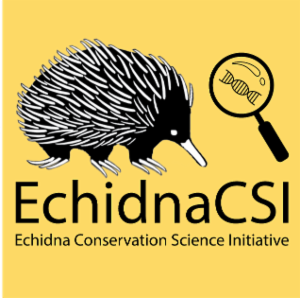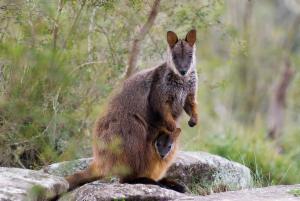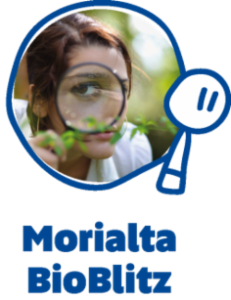Search for Hyporhamphus australis returned 4,679 results.
Refine results
Refine results
Section
- Species (3,422)
- Site Page (621)
- Data resource (322)
- Biodiversity Science project (159)
- Institution (50)
- Support article (39)
- Common Name (21)
- Data provider (21)
- Species list (12)
- Spatial layer (8)
- Collection (4)
Taxonomic rank
- Species (1,855)
- Unranked (1,131)
- Variety (271)
- Subspecies (146)
- Form (12)
- Genus (3)
- Subvariety (2)
- Infraspecific Name (1)
- Species Group (1)
Image available
- Yes (537)
Lifeforms
- Insects and Spiders (543)
- Crustaceans (106)
- Fungi (84)
- Molluscs (81)
- Fish (61)
- Birds (23)
- Mammals (13)
- Reptiles (12)
- Amphibians (2)
Taxonomic status
- Accepted (1,490)
- Synonym (1,270)
- Heteroptypic Synonym (281)
- Homotypic Synonym (212)
- Misapplied (55)
- Miscellaneous Literature (38)
- unreviewed (32)
- Pro-parte Synonym (15)
- Excluded (12)
- unreviewedSynonym (12)
- Inferred Accepted (2)
- Subjective Synonym (2)
- Inferred Unplaced (1)
Conservation status in Australia
- Endangered (10)
- Vulnerable (10)
- Critically Endangered (3)
Conservation status in ACT
- Endangered (1)
- Vulnerable (1)
Conservation status in NSW
- Vulnerable (7)
- Endangered (6)
- Critically Endangered (1)
- Extinct (1)
Conservation status in QLD
- Vulnerable (6)
- Endangered (4)
- Near Threatened (2)
Conservation status in VIC
- Endangered (10)
- Critically Endangered (7)
- Vulnerable (5)
Conservation status in TAS
- Endangered (6)
- Rare (6)
- Extinct (1)
Conservation status in SA
- Rare (7)
- Vulnerable (5)
- Endangered (4)
Conservation status in WA
- Endangered (4)
- Critically Endangered (3)
- Priority 1: Poorly-known species (3)
- Priority 3: Poorly-known species (3)
- Priority 4: Rare, Near Threatened (3)
Conservation status in NT
- Endangered (3)
- Vulnerable (1)
-
Biodiversity Science project: Operation Magpie
Operation Magpie was a large-scale, community-based study of magpies in South Australia and how people interact with these birds. Over 2,000 people responded to an online survey instrument and many completed an observational study of Australian magpies. Feeding birds is a common pastime for Australians and magpies are one of the most commonly fed birds. Respondents reported that they enjoy interacting with magpies because of their song and their interesting behaviour...

-
Biodiversity Science project: Echidna-CSI
Although an iconic native Australian animal, we do not know much about echidnas’ wild populations, as they are extremely hard to find (when you’re actually looking for them). However, we know that there are many of you that have seen wild echidnas (sometimes even in your own backyard!) and taken photos or videos of them. With your help and photo taking abilities we can start filling in the gaps about wild echidnas in Australia...

-
Biodiversity Science project: Help find brush-tailed rock-wallabies
Brush-tailed rock-wallabies occur in NSW, Victoria and Queensland. They were once considered fairly common. However, in recent years they have experienced a dramatic reduction in range and abundance, particularly in Victoria and southern and western NSW. They are currently listed as an endangered species under the NSW Threatened Species Conservation Act 1995. Foxes are believed to be the most common reason for the brush-tailed rock-wallaby's decline...

-
Biodiversity Science project: PlatypusWatch - Queensland
The platypus is one of Australia's most amazing animals. Unfortunately, there is growing evidence that its numbers are declining. We urgently need to know where platypus live – where they are common and where they have disappeared. Platypus live up and down the east coast of Australia and inland from the Dividing Range but we know little of how many live where...

-
Biodiversity Science project: Morialta BioBlitz 2015
Scientists and naturalists conduct biological surveys and take members of the public along to help collect, observe, record and learn. BioBlitz events are hands-on, scientific fun, designed around making discoveries, sharing talents, and igniting the interests of participants. How will the Morialta BioBlitz run? The BioBlitz will run over two days. The first day is a Friday, with the daytime activities reserved for school classes...

-
Biodiversity Science project: Frog ID
Australia has over 240 known species of frog, almost all of which are found nowhere else in the world. Some species are flourishing, like the Striped Marsh Frog. But others have declined dramatically since the 1980s, and four have become extinct. FrogID is a national citizen science project that is helping us learn more about what is happening to Australia’s frogs. All around the country, people are recording frog calls with nothing more than a smartphone...

-
Biodiversity Science project: Fairywren Project
From vibrant colors and enchanting displays to whirling songs and musical calls, Australia's fairywrens have long fascinated scientists and bird watchers alike. Years of research have revealed much about these intriguing creatures, but many questions still remain. The Fairywren Project seeks to bring these admirers together under one common goal to better understand some of Australia's most celebrated birds...

-
Biodiversity Science project: Carnaby's Black-Cockatoo Recovery Project
With support from Natural Resource Management groups, the Department of Environment and Conservation and funding from BirdLife Western Australia, we work to implement recovery actions and secure a future for this iconic species...

-
Biodiversity Science project: Great Victorian Koala Count 2015
Victoria and South Australia have large and thriving Koala populations, unlike Queensland, New South Wales and the Australian Capital Territory where Koala populations are in decline and are listed as vulnerable under the Environment Protection and Biodiversity Conservation Act 1999. In most areas of Victoria, Koala densities are naturally low (on average about one per hectare)...

-
Support article: BioCollect and iNaturalist
BioCollect and iNaturalist are tools which can help you collect data and contribute to the Atlas of Living Australia (ALA). Depending on the nature of your project, either BioCollect or iNaturalist may be better suited to your needs. To help you decide, some of the reasons you might choose either the platform are outlined below...